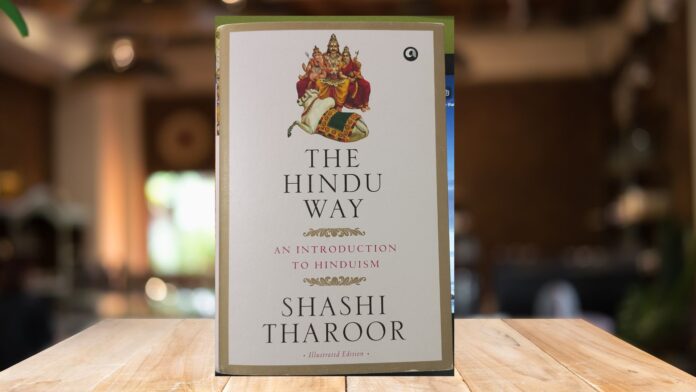Phenomenology says that “our perception must be free from any presupposition.” The Nyaya philosophy states that “a real experience of some object is only possible if we perceive it in its precise form.” Then only we can assert that our experience is true and accurate.
Considering the concepts of two different systems, I would like to suggest that all the readers read this without any presuppositions. Only then can we enjoy the essence of this precise work by Dr. Sashi Tharoor, which reveals the broadness of the Indian cultural legacy and a glimpse of the cultural history of India.
I, too, had many presuppositions regarding the author’s ideas and presentation and the cumbersomeness of the book, as it is the work of a highly intelligent person who is well known due to the fluency of his language, English. All the misunderstandings and presuppositions emerging in my mind vanished when I visited the Landmark (a section of books) at Forum Mall, Bangalore, and started reading the introduction of this book because it was easy to read and assimilate for me, and I got a glimpse of Hinduism and its precise definition.
Representing Hinduism, the author always accepts that the concepts of Dr. Radhakrishnan and Swami Vivekanand inspired him. He claims that the concept of tolerance and universal acceptance is the identity of Hinduism, and that anyone from India who has a relationship on either his paternal or maternal side, or who has been practising Hindu Dharma according to his preference, is a Hindu.There is a brief definition pertaining to Hinduism in the book, as it has been established as such a broad concept and explained nicely by the author.
The book’s opening chapter explains all the scripture related to the Hindu dharma, and it has been mentioned multiple times that there is not a single scripture in this dharma. Everyone is free to interpret in their own way.It isn’t easy to cover India’s entire concept of religion, philosophy, and culture in a mere 200 pages. Still, anyone interested in the Indian cultural legacy will certainly have a glimpse of the broadness of India and Hinduism after reading this book.
There is a short description of the Indian philosophical system that has been enlisted in the book, including the orthodox and heterodox systems. The Veda, Vedanga, Upanishad, Shruti, Smriti, Darshana—everything that is the central pillar of Indian legacy has been mentioned beautifully. So, it can be read by heart by those interested in Sanskrit because they will enjoy the book’s content.
The final few chapters, “The Great Soul of India,” bridge the gap between ancient and contemporary philosophers by introducing all distinguished souls such as Shankar, Ramanuja, Guru Nanak, Swami Vivekanand, S. Radhakrishnan, and many more.
Ultimately, I can assertively say that the book is beyond all the political speculation, as many people have asked me, and it is one of the best presentations of Indian cultural legacy.





Its like you read my thoughts! You seem to understand so much about this, such
as you wrote the e book in it or something. I feel that you simply can do with some p.c.
to power the message home a little bit, however instead
of that, this is excellent blog. A fantastic read.
I will definitely be back.
Check out my site … vpn special code
Good day I am so grateful I found your site, I really found you by error,
while I was searching on Bing for something else, Nonetheless
I am here now and would just like to say thanks a
lot for a marvelous post and a all round interesting blog (I also love the theme/design),
I don’t have time to go through it all at the minute but I have saved it and
also included your RSS feeds, so when I have time I will be back to read more, Please do keep up the fantastic job.
Here is my web site; vpn 2024
I’ve learn some just right stuff here. Definitely worth bookmarking for revisiting.
I wonder how a lot attempt you set facebook vs eharmony to find love online create any such wonderful informative site.
You could definitely see your skills in the work you write.
The arena hopes for even more passionate writers like you who aren’t afraid to say how
they believe. Always follow your heart.
Also visit my site … eharmony special coupon code 2024
It’s really a nice and helpful piece of information. I am happy that
you simply shared this useful info with us. Please stay us informed like this.
Thanks for sharing.
my webpage nordvpn special coupon code 2024